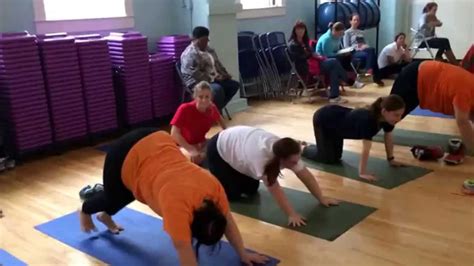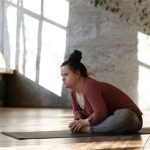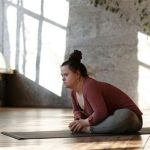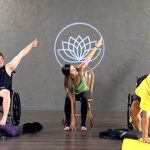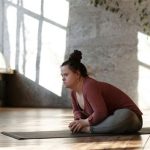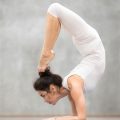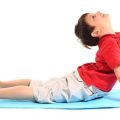Yoga for People With Physical Disabilities: Inclusive Practices for All Abilities
Yoga is a transformative practice that offers both physical and mental benefits, but what about individuals with physical disabilities? Can they also experience these advantages? The answer is a resounding yes. This comprehensive guide explores how people with physical disabilities can adapt yoga to suit their unique needs, highlighting inclusive approaches and practical strategies to overcome challenges. With accessible modifications, anyone can enjoy the power of yoga.
Introduction
Yoga has long been associated with physical flexibility, strength, and mental calm, but it has evolved far beyond just a series of challenging poses. For those living with physical disabilities, yoga presents a holistic way to connect mind and body, offering benefits such as improved muscle tone, reduced stress, and enhanced mobility. The key lies in adapting yoga practices to the individual’s abilities. With modifications and accessible props, yoga can be tailored for everyone, no matter their physical limitations. This guide explores inclusive practices, providing tips, exercises, and strategies to integrate yoga into the lives of people with disabilities.
Key Concepts
- Adaptive Yoga: Yoga poses and routines specifically modified for individuals with different physical abilities.
- Chair Yoga: A form of yoga practiced while seated, often used by those with limited mobility or balance issues.
- Props and Modifications: Tools like straps, blocks, and bolsters that make poses more accessible.
- Mindfulness and Breathwork: Key elements of yoga that focus on mental clarity and relaxation, beneficial to all practitioners, especially those with disabilities.
Historical Context
Yoga has ancient roots, dating back over 5,000 years to the Indus Valley civilization. While originally practiced as a spiritual discipline, yoga’s physical postures have become central to its modern iteration. However, it wasn’t until the late 20th century that yoga was adapted for people with physical disabilities. Pioneers like Matthew Sanford, a paraplegic yoga instructor, have been instrumental in showing that yoga is not just for the able-bodied but can be a profound practice for all. This shift towards inclusivity has paved the way for greater accessibility, ensuring that people with disabilities are part of the yoga community.
Current State Analysis
Today, yoga for people with physical disabilities is gaining traction, with more instructors being trained in adaptive practices. However, accessibility issues still persist, especially when it comes to resources and instructors trained specifically in disability-inclusive yoga. Some individuals face barriers like lack of space or proper equipment, while others may feel excluded due to the misconception that yoga is only for the flexible and physically capable. Despite these challenges, specialized yoga studios and online platforms are beginning to offer adaptive yoga sessions, giving people with disabilities more opportunities to practice.
Practical Applications
For people with physical disabilities, yoga can be customized in numerous ways. Below are practical applications for different types of disabilities:
- Seated Yoga (Chair Yoga): Ideal for individuals with limited mobility or those who use a wheelchair. This type of yoga focuses on seated postures and gentle movements that promote flexibility and strength.
- Supported Yoga: By using props like bolsters, blocks, and straps, individuals can perform poses with additional support, reducing the strain on specific muscle groups.
- Breath-Centered Practices: Breathing exercises (pranayama) can significantly benefit those with restricted mobility, as they help improve focus, calm the nervous system, and enhance lung capacity.
- Partner Yoga: For individuals who need assistance, practicing with a partner or caregiver can facilitate the movement and allow for deeper stretches.
Case Studies
| Case | Disability | Yoga Adaptation | Outcome |
|---|---|---|---|
| John’s Experience | Paraplegia | Chair Yoga with Upper Body Focus | Improved posture and muscle strength in shoulders and back |
| Maria’s Journey | Multiple Sclerosis | Gentle Yoga with Breathwork | Enhanced mobility and reduced muscle stiffness |
| David’s Practice | Amputation (Leg) | Prop-Assisted Standing Poses | Increased balance and confidence in movement |
| Sophia’s Path | Cerebral Palsy | Partner Yoga with a Focus on Flexibility | Improved range of motion and reduced spasticity |
Stakeholder Analysis
Yoga for people with disabilities benefits not only individuals but also communities, healthcare providers, and society at large:
- Individuals with Disabilities: Gain physical, emotional, and mental health benefits from an adapted yoga practice.
- Healthcare Providers: Can integrate yoga as a complementary therapy for patients with disabilities to promote holistic well-being.
- Yoga Instructors: Need specialized training in adaptive yoga to ensure they can cater to a diverse group of students.
- Society: Encouraging inclusive practices like adaptive yoga promotes greater awareness and acceptance of disability.
Implementation Guidelines
For those looking to implement yoga programs for people with physical disabilities, consider the following guidelines:
- Instructor Training: Ensure yoga instructors are trained in adaptive practices and understand how to work with different types of disabilities.
- Accessible Spaces: Create yoga spaces that accommodate wheelchairs, walkers, and other mobility devices.
- Inclusive Language: Encourage instructors to use language that is empowering and inclusive, focusing on what individuals can do rather than limitations.
- Personalized Modifications: Adapt yoga poses to the individual’s abilities, using props and supports as needed.
Ethical Considerations
In offering yoga to individuals with physical disabilities, it’s important to consider the following ethical issues:
- Consent and Autonomy: Ensure that individuals have full autonomy over their participation, modifications, and level of comfort during yoga sessions.
- Avoiding Paternalism: While it’s important to offer assistance, avoid treating individuals as if they are incapable or fragile.
- Dignity and Respect: Always treat individuals with dignity, and avoid practices that may feel infantilizing or demeaning.
Limitations and Future Research
Despite the growing interest in yoga for people with physical disabilities, several limitations still exist. More research is needed to better understand how different disabilities respond to specific yoga adaptations. Additionally, access to trained instructors and appropriate spaces remains limited, particularly in rural or underserved areas. Future research should focus on the long-term benefits of adaptive yoga and explore innovative ways to make the practice more widely available.
Expert Commentary
Yoga for people with physical disabilities is more than a modified fitness regime; it’s a transformative practice that fosters connection between mind, body, and spirit. As we continue to break down barriers in fitness and well-being, adaptive yoga plays a key role in creating an inclusive space where everyone can thrive, regardless of physical ability.
